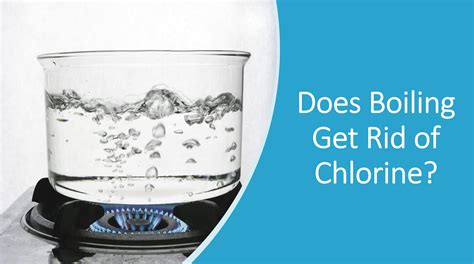Get Rid of Chlorine Faster: Proven Methods
Chlorine is a ubiquitous disinfectant in swimming pools and water treatment plants, ensuring our safety and health. However, its lingering odor and potential irritation can be unwelcome after a swim or when dealing with chlorinated water in other contexts. This article explores proven methods to expedite the removal of chlorine from water, your skin, and your hair, addressing common concerns and providing practical solutions.
How Long Does Chlorine Take to Dissipate Naturally?
The time it takes for chlorine to dissipate naturally depends heavily on several factors: temperature, air circulation, water volume, and the initial chlorine concentration. In a well-ventilated area, with exposure to sunlight, chlorine will gradually evaporate. However, this process can be slow, potentially taking several hours or even days. This makes seeking faster methods a desirable option for many.
How to Get Chlorine Out of Your Hair Faster
Chlorine can wreak havoc on hair, drying it out and causing discoloration. Several strategies can help you remove chlorine from your hair more quickly:
Thorough Washing:
Immediately after swimming, rinse your hair thoroughly with cool, clean water. This initial rinse helps remove much of the chlorine before it has a chance to penetrate the hair shaft. Follow this with a gentle sulfate-free shampoo and a deep conditioning treatment to restore moisture.
Vinegar Rinse:
A vinegar rinse is a popular home remedy. Mix a solution of equal parts water and apple cider vinegar or white vinegar. Apply it to your hair after shampooing, let it sit for a few minutes, and then rinse thoroughly. The acidity of the vinegar helps neutralize the chlorine.
Clarifying Shampoo:
Clarifying shampoos are designed to remove product buildup, including chlorine residue. Use a clarifying shampoo once a week, or as needed, to effectively cleanse your hair. Always follow with a moisturizing conditioner.
How to Get Chlorine Out of Your Skin Faster
Chlorine's drying effect on skin can lead to itching and irritation. Here's how to expedite its removal:
Immediate Showering:
A cool shower immediately after chlorine exposure is crucial. This removes the chlorine from the surface of your skin before it has a chance to cause irritation. Use a gentle, fragrance-free soap to clean your skin effectively.
Moisturizing:
After showering, apply a generous amount of moisturizer to your skin to replenish lost moisture and soothe irritation. Look for moisturizers that contain soothing ingredients like aloe vera or shea butter.
Baking Soda Paste:
For persistent chlorine odor or irritation, consider a baking soda paste. Mix a small amount of baking soda with water to form a paste and apply it to affected areas for a few minutes before rinsing. This helps neutralize the chlorine.
How to Remove Chlorine from Water Faster
Removing chlorine from larger volumes of water, like a spa or a small pool, requires a different approach.
Activated Carbon Filtration:
Activated carbon filters are highly effective in removing chlorine from water. These filters adsorb chlorine molecules, effectively purifying the water. This method is particularly useful for those with sensitive skin or who want to avoid chemical treatments.
Chemical Neutralization (Sodium Thiosulfate):
Sodium thiosulfate is a chemical agent commonly used to neutralize chlorine in water. It reacts with chlorine, rendering it harmless. This method requires careful measurement and adherence to safety guidelines, as incorrect usage could be detrimental.
Aeration:
Increasing the water's surface area by adding aeration devices or simply allowing the water to cascade over surfaces increases the contact between the water and air. This promotes chlorine evaporation, but it's a relatively slow process and may not completely eliminate it.
Why is it Important to Remove Chlorine Quickly?
Promptly removing chlorine is essential to mitigate its potentially harmful effects:
- Skin Irritation: Chlorine can dry out the skin, leading to itching, redness, and irritation.
- Hair Damage: Chlorine can damage hair, causing dryness, brittleness, and discoloration.
- Respiratory Issues: Inhaling high concentrations of chlorine can irritate the respiratory system.
- Allergic Reactions: Some individuals are more sensitive to chlorine and may experience allergic reactions.
By employing these methods, you can significantly reduce the time it takes to rid yourself of chlorine, protecting your skin, hair, and overall well-being. Remember to always follow safety precautions when handling chemical agents.

